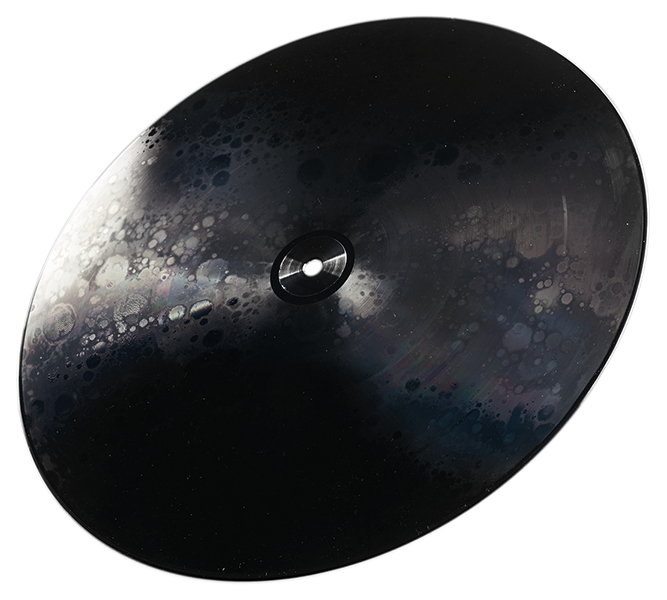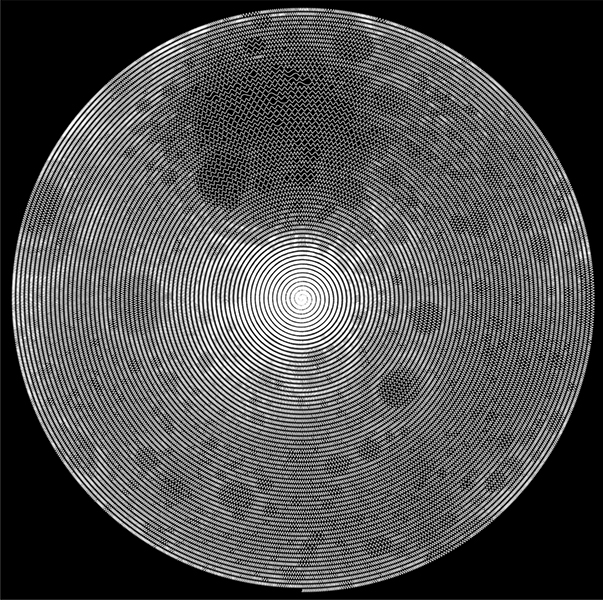

The moon is a disc. As the subject of countless poems and songs, it is both an origin and a refuge of our feelings, desires, and fantasies. Science, which has observed the moon, flown around it, and eventually set foot on it, has not changed this fact. We know now that the moon is not a disc but that it has the shape of a slightly deformed sphere. And yet, despite extensive photography, measuring, and mapping, the moon still holds its poetic power for many. Sober facts converge with an aesthetic form. As often with Katja Aufleger, Remaining Pieces deals with the relationship between imagination and reality and between knowledge and experience—with the visible, the sayable, and what we feel. The sounds produced playing her record are an accurate translation of the lunar surface into sound frequencies.
Correspondingly, we recognize a crater landscape on the sound storage medium‘ s surface, which is an optical effect that occurs when the grooves refract light. If one could push the record in, hemispheres would appear, either from the nearside or the „dark“ side of the moon. The grooves would be like a spiral of densely arranged latitudes; the sounds would correspond to the mountains, valleys, craters, and plains located on them. What we hear is an acoustic topography, yet the sound evokes the vastness of space. We think of a cosmic melody or the signals that humankind sends out in search of extraterrestrial life. The rotating vinyl brings to mind nightlife, DJs, and people dancing. Just like the moon, clubs are mythical places of longing, which, when looked at soberly, seem entirely different but without losing their magic. The moon and clubs both emerge at night. They both have a unique attraction— the surging crowd, the ebb and flow.
– Jörn Schafaff